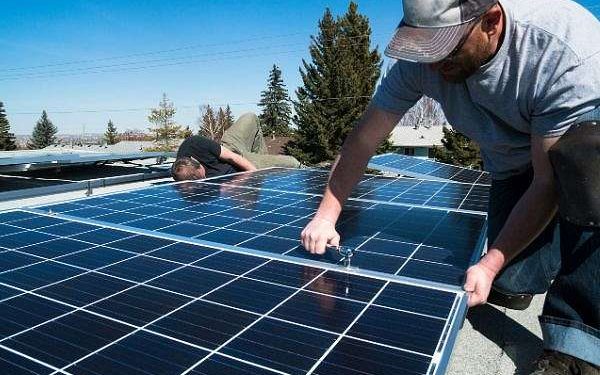Neighbour to neighbour solar trading lifts returns and eases strain on the grid
by Simon Mansfield
Sydney, Australia (SPX) Aug 15, 2025
Australian researchers report that households can earn more by selling excess rooftop PV directly to nearby buyers through peer to peer energy sharing, striking prices between feed in tariffs and retail rates while easing local grid stress.
Worldwide, about 25 million households use solar today, with 100 million forecast by 2030. In 2024, an estimated 597 GW of solar capacity was installed globally, up 33 percent on 2023.
Australia leads on adoption, with panels on nearly 40 percent of homes, or about 4.1 million rooftops. Heavy midday surplus has depressed feed in tariffs, prompting questions about value. A recent federal program set aside 2.3 billion AUD for home batteries, but new modeling finds storage alone does not always pay.
Researchers from the University of South Australia and Deakin University analyzed four setups using 12 months of real data from a 10 kW solar home in Geelong and three neighboring consumers: peer to grid export, peer to grid with batteries, peer to peer sharing, and peer to peer with batteries.
“Under current conditions in Victoria, the feed in tariff is less than 5 cents per kilowatt hour, while the retail price is around 28 cents. Selling surplus PV energy directly to neighbours at a mutually agreed price in between can be more profitable for solar householders and still cheaper for buyers,” Dr Wang says.
Local P2P sharing also stabilizes supply and demand by reducing exports to a network designed primarily to distribute power one way rather than receive it.
Results showed that adding a 5 kW battery raised self consumption to 22 percent and cut imports, but generated no profit for the host and offered no benefit to the neighbour given the upfront cost. Without batteries or P2P, the host exported almost 12,800 kWh a year and self consumed just 14.6 percent.
Under P2P with a 5 kWh battery, self consumption rose to nearly 38 percent, though less surplus remained for neighbours because charging took priority. Neighbours participating in P2P cut grid electricity use by more than 30 percent.
Payback depended on right sizing. The shortest payback, 12 years, came with a 7.5 kWh battery in the P2P model.
“Our modelling revealed that under current conditions, P2P energy sharing coupled with a 10kWh battery could deliver the highest return – $4929 – for solar owners over 20 years,” Dr Wang says.
“In contrast, all peer to grid scenarios resulted in negative returns over the same period due to low feed in tariffs and high battery costs.
“Battery size proved critical. Systems with oversized batteries saw returns diminish due to higher capital and maintenance costs and reduced surplus energy.”
Co author Professor Chunlu Liu says there is a trade off between private storage and community benefit: “When batteries are used, they benefit the solar owner by reducing their grid reliance, but this can limit the amount of energy shared with neighbours because they are fully charged before any surplus energy is shared. The challenge is to find a balance that works for everyone,” Prof Liu says.
The team adds that heat pumps and thermal storage could soak up excess PV to further lift self use. With Australia’s world leading rooftop penetration, scaled P2P models could relieve grid pressure and improve home solar economics.
“Our analysis shows that if P2P energy sharing prices are set between the feed in tariff and retail rates, both sellers and buyers can come out ahead,” according to co author Professor Mark Luther. “But market rules and technical systems need to support these transactions at scale.”
Research Report:Technical and economic analyses of grid-connected residential PV considering batteries and peer-to-peer energy sharing
Related Links
University of South Australia
All About Solar Energy at SolarDaily.com


















